CASE STUDY
5 Steps to Organizing Your Primary Closet
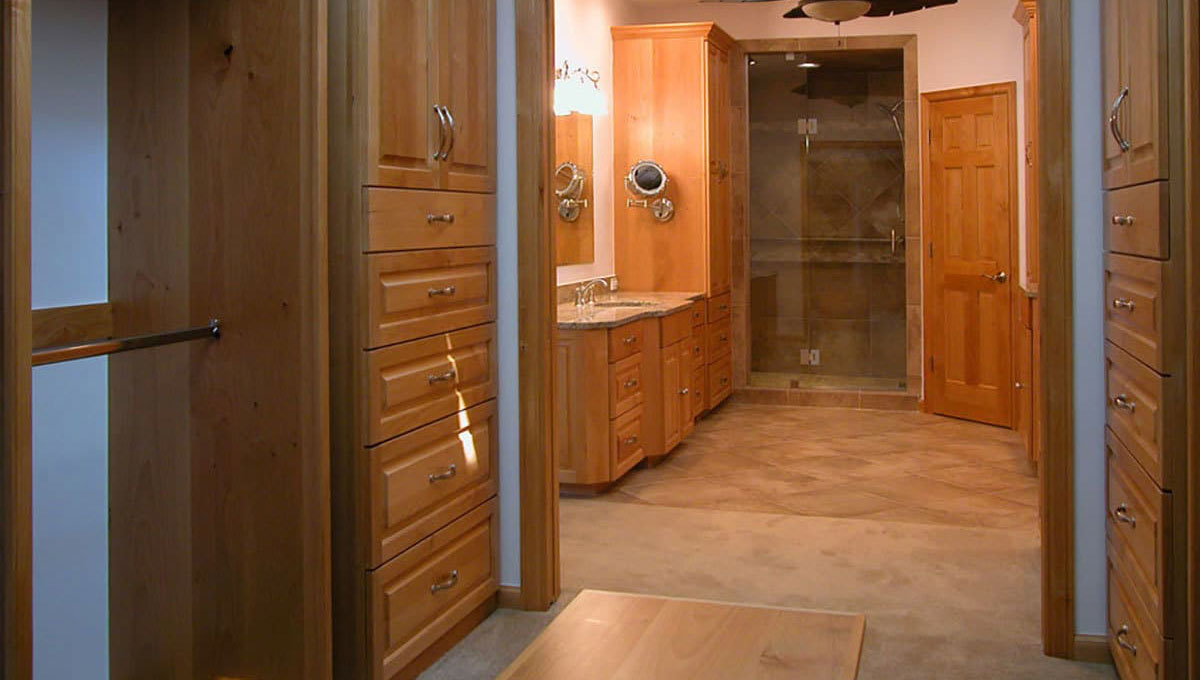
by Ed Kaplan
“I want to be able to see everything.” “I am not going to live like this anymore.” Sound familiar? Most homeowners, regardless of the size of their house, want organized, accessible storage space in the primary bedroom closet.
If the diminishing space crisis has left you feeling more than a little cramped, don’t loose faith, for there are some tried and true solutions for reclaiming usable storage space in your closet. Since you use your closet every day, you will want it to be well organized not only for dressing in the morning, but for your sanity as well. Once you have made a commitment to using organization for optimal space utilization, it is time to undertake a complete evaluation of your requirements, plan your attack and work to obtain maximum use of every inch of space.
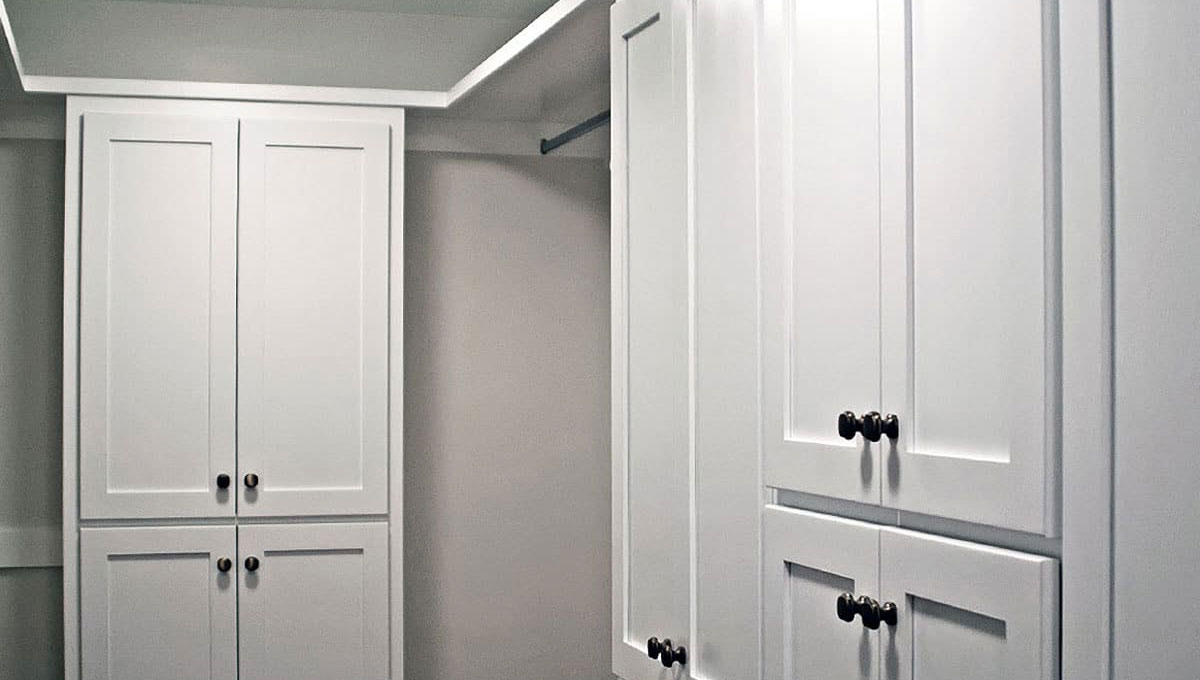
Evaluation of Needs
There are two approaches to developing more storage space for your closet: The first is to design and build a bigger and more space-efficient closet during the course of remodeling. The second (where either budget or space limitations preclude expansion) is to optimize the use of the space currently available. Where ceiling height is available, triple racking of hanging garments can often increase a closets storage capacity by as much as fifty percent, without changing its footprint. Independent of which approach you use, reorganizing your closet will do more than simply reclaim unused space, it will provide you ready access to your wardrobe and its accessories. Start by examining the existing space, then evaluate what you need to store and how you want to access it.
The Closet Obstacle Course
The first encounter with an obstacle is found at the closet door. When you open the closet door, ideally you should be able to see your entire wardrobe. Where exterior clearance is not a problem, even the inside of the door can be used for storage when it swings to the outside. Although popular, pocket doors and/or bi-fold doors do not allow you to hang anything on their back sides.
Beyond the door, other obstacles can be found in the form of plumbing chases, heating and air conditioning duct work, sloped ceilings, windows and electric power distribution panels. Proper closet design optimizes space utilization while working around these interior problems.
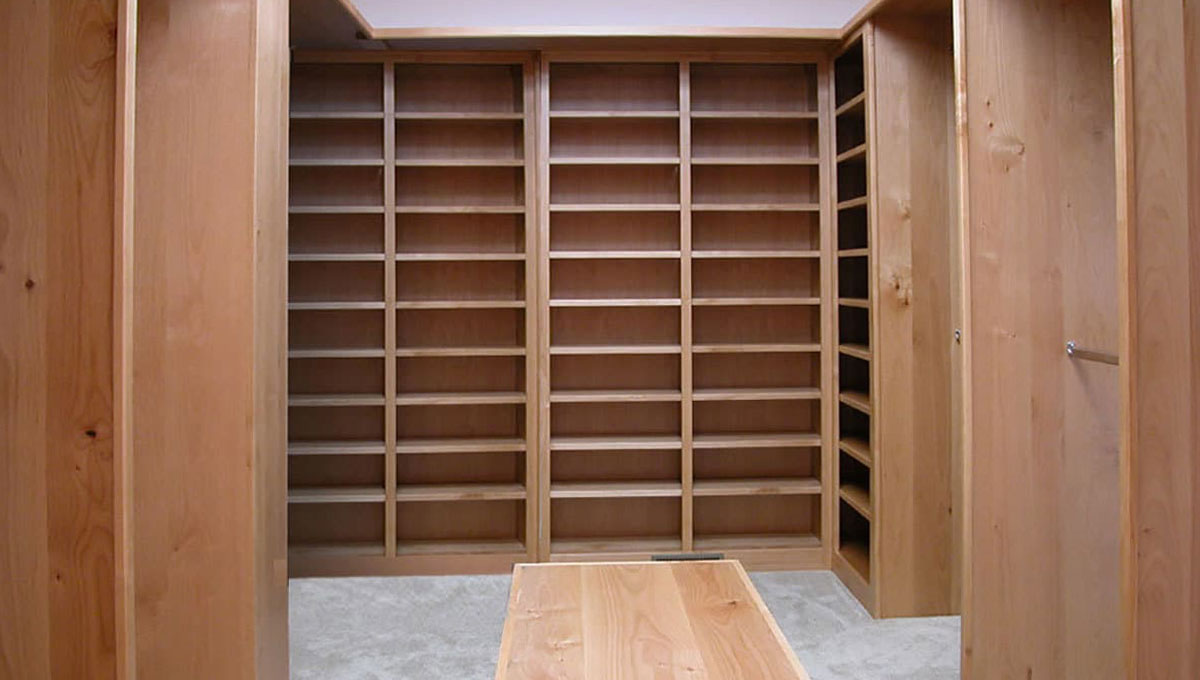
Measuring Up
The next step in closet design is to determine the proper amount of shelf and hanging space for the clothes, accessories, suitcases and other items you intend to store. In doing this, it has been my experience (I hope this comment does not label me sexist) that women generally require more closet space than men. Women also have more unique storage requirements than men. Keeping in mind, let’s explore some of the basic storage requirements for both men and women, and through this process, attempt to establish some elementary guide-lines that will help us all understand the essentials of sound closet design.
Storage requirements for men usually include, but are not limited to, suits, jackets, trousers, hanging shirts, bathrobes, folded shirts, sweaters, neckties, belts, warm up suits, T-shirts, underwear, socks and shoes. On occasion you may also find some sporting equipment, such as tennis racquets, etc.
The first item that should be addressed by grouping is storage for hanging items. Most men hang their trousers on a hanger by the folded method as contrasted to hanging by the cuff. Although the latter approach is not that common, a determination of which approach is used is important inasmuch as it will influence the amount of lineal hanging storage and hanging height that is required.
Other items included in the lineal space calculation are sport jackets, suits, and hanging shirts. And shirts are another item whose storage requirements can vary amongst men. Although increasingly rare, some men like their shirts folded and boxed as opposed to being hung on hangers, a practice which certainly influences the need for hanging space.
The next important item in calculating lineal storage requirements is the type of hanger being used. Almost all of our clients have a hodgepodge of hangers, with an item many times being hung on the hanger that came along with it when it was purchased or when it was returned from the cleaners.
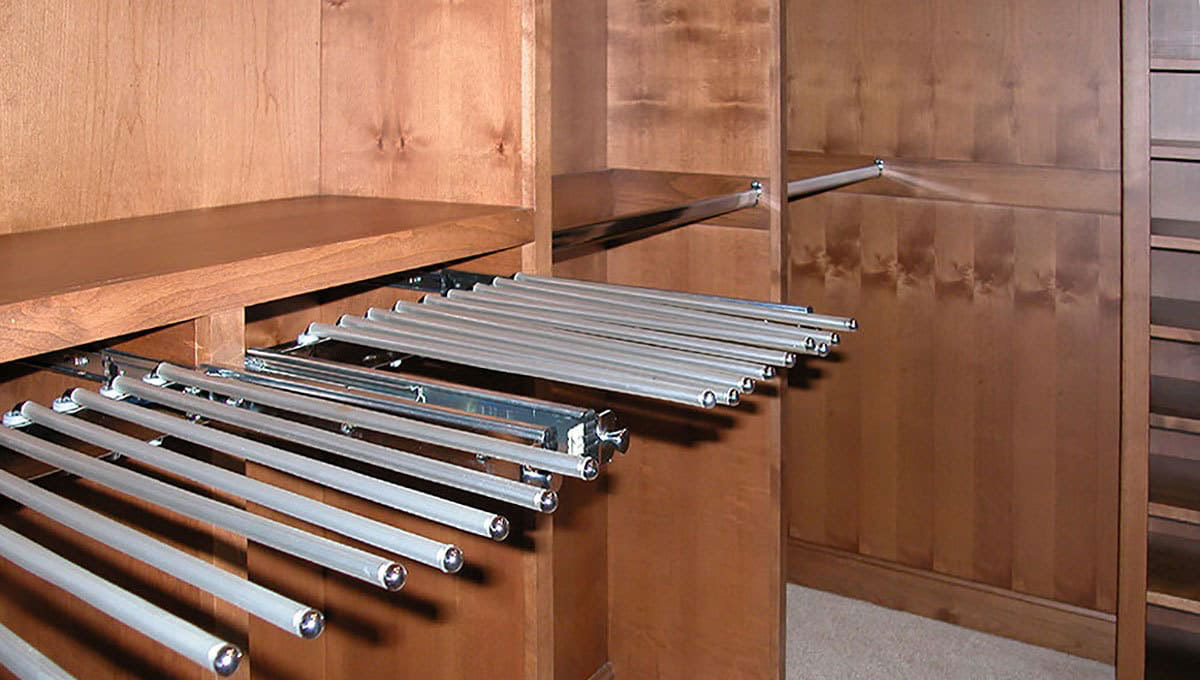
For a neat looking, space efficient closet I recommend that the hangers be divided into two categories, those for suits and sport jackets and those for shirts. Matching plastic hangers for shirts are inexpensive and readily available at a variety of sources such as supermarkets and numerous mass merchandisers. Suit hangers made of wood or plastic are a bit more expensive and if you cannot readily find them can be easily purchased from Amazon.
The average space required for a suit or jacket with pants folded is 3” in width and from 36” to 40” in length. Suits with pants by cuff require the same width, however overall hanging length changes to 55” to 60”. Trousers require about half that space or approximately 1-1/2” and the same overall length depending upon how they are hung. Hanging shirts presents a slightly different story. They can be hung on the wire hangers that accompany them from the cleaners or transferred to plastic hangers when they are brought home. They take up approximately 1” of width and from 38” to 40” in length. Consequently, to determine your spatial hanging needs, take an inventory of the number of garments that you have, including whatever is at the laundry or dry cleaners, and record the requirements. Then proceed to evaluate the balance of your storage requirements.
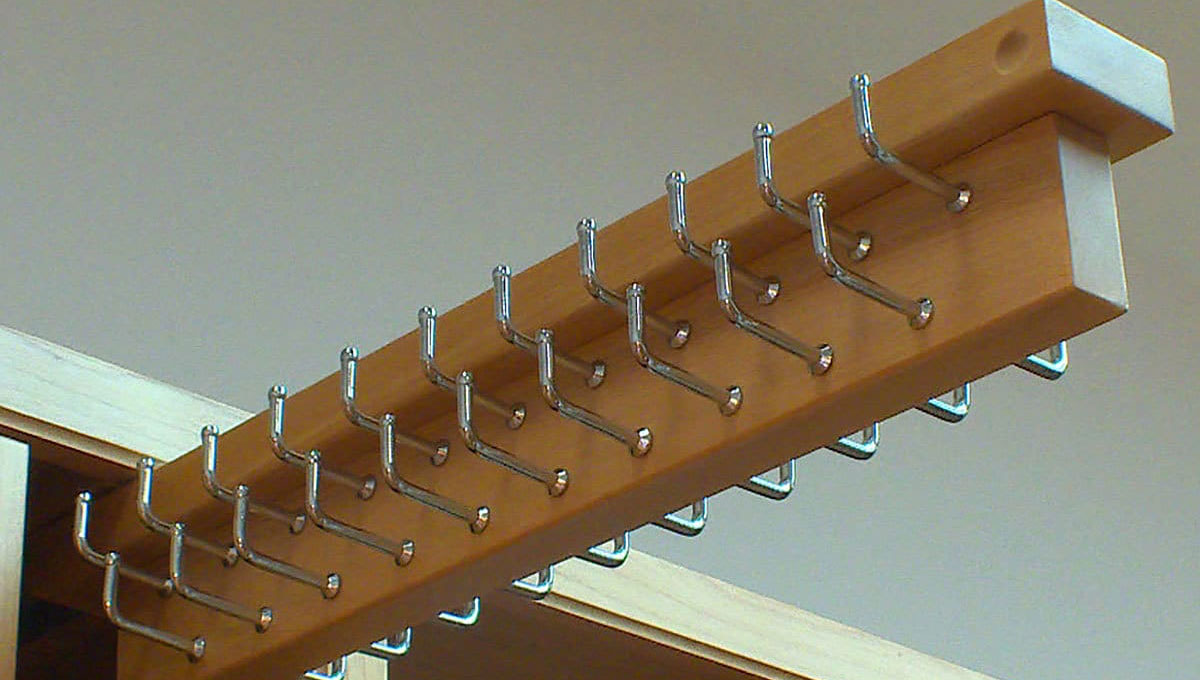
With the exception of belts, ties and/or shoes, the remainder of a man’s wardrobe can be stored either on open shelves or in drawers. Neckties and belts, however, should have their own clearly defined storage area in a readily accessible space that doesn’t require shifting things around. Two of my favorite places are either on the end of a row of shelving or on the back side of a swing-out door. Above and beyond that, there are several types of necktie and belt storage devices available. They can be easily ordered from Amazon and/or a manufacturer such as Rev-a-Shelf. Within the broad spectrum of closet accessories that are offered one can easily find such things as small motorized carousels, and slide out racks that tuck conveniently within the hanging space for suits, jackets and/or shirts.
Shoe and Drawer Storage
Shoe storage can be entertained in a variety of ways. It depends on the number of shoes that an individual has and how they want them stored. Shoes can be stored in boxes, on racks, on single depth shelves or on double depth full extension pull out shelving, but not on the floor as their presence impedes vacuuming. To allow for variation in shoe height and/or boot height, the shelving should always be adjustable to maximize the number of pairs of shoes that can be stored in finite space. If your preference is to store shoes in boxes, then clear plastic shoe boxes arranged on open shelving is the most convenient approach. If shoe boxes are not readily available, or a less expensive approach is required, use the original package that the shoes were purchased in and label the outside with self-adhering labels.
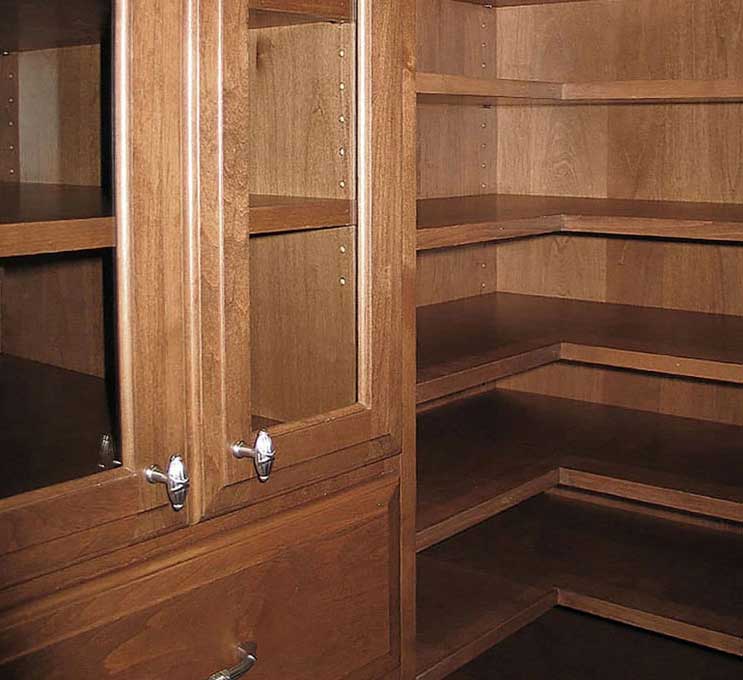
Drawers can be used for storage of socks, underwear and miscellaneous other items with needs being determined by taking a physical inventory. Beyond drawers and basic shelf assemblies, the area over the top closet rod should also contain shelving which can be used for hats and out of season items.
Womens’s Storage
Women’s storage requirements throw in a few more wrinkles in comparison to what is needed for the average male. To start off with, most women have far more pairs of shoes than men. They also have a need for pocket book storage as well as, in some situations, hats. Their hanging needs are also more complex due to the length of some of their clothes such as evening gowns.
Women’s blouses generally take up 1” in width and from 25” to 44” in length. Slacks will require 1-1/2” in width and from 46”-48” in length. Skirts on again require 1-1/2” in width and from 23’ to 43” in length. Jackets will require up to 3” in width and from 27” to 40” in length while dresses will require up to 3” in width with anywhere from 43” to 60” in length. Complicating the planning of storage requirements are needs for evening gowns and pocket books. Consequently, a good physical inventory is once again a necessity.
In summary, the old adage of “a place for everything and everything in its place” can become a way of life with proper closet design. Organization and tidiness have become necessities especially for those who attempt to combine limited living spaces and acquisitiveness, common aspects of today’s society.
Share your vision with us.
The experts at The Buckingham Group are here to create a home that’s as extraordinary as you are.
Any project, any style, any dream, bring your inspiration to The Buckingham Group.
Schedule your personalized complimentary appointment today.
PORTFOLIOS
RESOURCES
The Buckingham Group | 4727 S. Memorial Drive | Tulsa, OK 74145 | 918-624-2666
